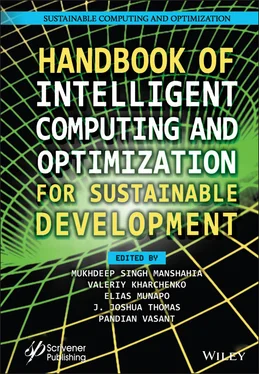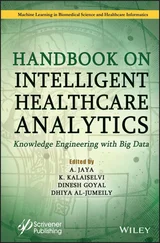41. O’Shea, T., Karra, K., Clancy, T.C., Learning approximate neural estimators for wireless channel state information, in: 2017 IEEE 27th international workshop on machine learning for signal processing (MLSP) , 2017.
42. Niu, Y., Li, Y., Jin, D., Su, L., Vasilakos, A.V., A survey of millimeter wave communications (mmWave) for 5G: opportunities and challenges. Wirel. Netw ., 21, 8, 2657–2676, 2015.
43. Alrabeiah, Muhammad, and Ahmed Alkhateeb. "Deep learning for mmWave beam and blockage prediction using sub-6 GHz channels." IEEE Transactions on Communications , 68, 9, 5504– 5518, 2020.
44. Myers, N.J., Wang, Y., González-Prelcic, N., Heath, R.W., Deep learning-based beam alignment in mmWave vehicular networks, in: ICASSP 2020-2020 IEEE International Conference on Acoustics, Speech and Signal Processing (ICASSP) , 2020.
45. Heath, R.W., Gonzalez-Prelcic, N., Rangan, S., Roh, W., Sayeed, A.M., An overview of signal processing techniques for millimeter wave MIMO systems. IEEE J. Sel. Top. Signal Process ., 10, 3, 436–453, 2016.
46. Erdogmus, D., Rende, D., Principe, J.C., Wong, T.F., Nonlinear channel equalization using multilayer perceptrons with information-theoretic criterion, in: Neural Networks for Signal Processing XI: Proceedings of the 2001 IEEE Signal Processing Society Workshop (IEEE Cat. No. 01TH8584) , 2001.
47. Feifan Wang, Baihai Zhang, Senchun Chai, Yuanqing Xia, "An Extreme Learning Machine-Based Community Detection Algorithm in Complex Networks", Complexity, vol. 2018, 10, 8098325, 2018. https://doi.org/10.1155/2018/8098325
48. West, N.E. and O’Shea, T., Deep architectures for modulation recognition, in: 2017 IEEE International Symposium on Dynamic Spectrum Access Networks (DySPAN) , 2017.
49. Jiang, Z., Molisch, A.F., Caire, G., Niu, Z., Achievable rates of FDD massive MIMO systems with spatial channel correlation. IEEE Trans. Wireless Commun ., 14, 5, 2868–2882, 2015.
50. Yao, M., Sohul, M., Marojevic, V., Reed, J.H., Artificial intelligence defined 5G radio access networks. IEEE Commun. Mag ., 57, 3, 14–20, 2019.
51. Kiselev, V.Y., Andrews, T.S., Hemberg, M., Challenges in unsupervised clustering of single-cell RNA-seq data. Nat. Rev. Genet ., 20, 5, 273–282, 2019.
52. Letaief, K.B., Chen, W., Shi, Y., Zhang, J., Zhang, Y.-J.A., The roadmap to 6G: AI empowered wireless networks. IEEE Commun. Mag ., 57, 8, 84–90, 2019.
1 *Corresponding author: hiremaths@nitrkl.ac.in
6
Designing of Routing Protocol for Crowd Associated Networks (CrANs)
Rabia Bilal1 and Bilal Muhammad Khan2*
1Department of Electrical Engineering, Usman Institute of Technology, Karachi, Pakistan
2Department of Electronics and Power Engineering, National University of Sciences and Technology (NUST), Karachi, Pakistan
Abstract
In the modern world, we have various networks for communication, for example, MANETs, VANETs, FANETs, and Wi-Fi. In this paper, it is discussed how all present networks can be compiled into a single crowd associated network called as CrANs. This paper contains a routing protocol for the proposed network. All applications for the proposed network have been discussed. The paper highlights the importance of making this network and how it tackles some problems that other networks have. Some limitations of the proposed network are also highlighted.
Keywords:CrANs, next generation networks, routing protocols, scalable algorithm
Today, the world is considered a global village. It is purely because communication and transportation have become easier. Earlier, we use the wired system of network for ways of communication that have evolved greatly in the past 30 years. There are many ways of communication available. Most common and vastly spread networks include Wi-Fi, WSN, MANETs, VANETs, and FANETs [1–4].
When last link of the communication network is wireless; it is called as a cellular network. The network is divided into different cells and by joining these cells to form a coverage area. With fixed trans-receivers, many portable devices can connect to each other.
The common networks for communication are Wi-Fi, WSN, MANETs, WANETs, and FANETs. Wi-Fi is the widely used wireless network that uses RF to transmit data with high speed internet [1–4]. There is wireless connection between receiver and sender: no limitation, ease of use, no cables for connection, secure internet connection, and robust performance.
WSN is wireless sensor nodes consist of sensors which are widely used in armed forces, malls, offices, and in our daily life to sense the temperature pressure, sounds, etc.
MANETs is an automatic network in which nodes are connected through wireless nodes. There is no base station. Mobile nodes, which act as router, are free to move. The major objective is scalability, reliability, and availability. Nodes can act as host and forward packets as well. Applications of MANETs are military tactical operations, search and rescue operation, search and rescue operation, and commercial use.
VANETs are formed similar to topology of MANETs. It is used for the transmission of information within vehicles and to road side communication. FANETs established in the air between the UAVs for transmission: traffic information, platooning, and road emergency services.
Mobility degree of FANETs is very high as compared to the MANETs and WANETs. In FANETs, we use nodes that are in flight. In FANETs, sensors are placed and every sensor has different data transfer methods, and there is fast change in topology. In FANETs, due to high node density during transmission, topology changes more frequently the other networks.
6.1.2 Challenges
6.1.2.1 Limitation of Research
Limitations of Wi-Fi are in the fact that it is spread over a very short distance (about 25 meters). When we are close to its source, the signals are strong, and when we are farther away, the signals become weak. This affects the communication. Another limitation of Wi-Fi is the security concerns that come with using it. The Wi-Fi is secured using a password which can be hacked very easily and the data of the user can be accessed.
We live in a third world country and there are a lot of security concerns. Whenever a place needs to be made secure, all mobile networks are blocked. In this way, communication through MANETs becomes impossible. Mobile nodes and network absence is the main issues. In MANETs, frequently establishment of links is difficult issue. There is limited bandwidth of wireless channel; in MANETs, there is limited power on which nodes work. Limits include the following:
1 1. No central control.
2 2. Fast movement of nodes.
3 3. Fast topology change.
4 4. Limited sources.
5 5. Communication gap between nodes.
VANETs (vehicular adhoc network) have cost, availability, node mobility, and topology changes that create issues in the practical life.
FANETs is very costly communication. They are not available everywhere. Their nodes are highly mobile and many data packets are lost in this way. Its node density is very low. We require mobility models for independent multi-UAV systems. Communication between the network and vehicle domain is hard.
The collected number of nodes that communicates with each other wirelessly by using radio signals with a shared common signal is called multihop wireless network
Adhoc network is similar to MHSNS. Nodes of adhoc network are mobile in general. Mobile hosts can be fixed and mobile in nature. Adhoc network can be infrastructure and infrastructure-less according to the nature of network. Most of the adhoc network uses the allocated frequencies for science, communication, and medical band. Adhoc network has more flexibility [5–7]. It is better in mobility. It can be turn up and turn down in a short time as shown in Figure 6.1. It can be consider as the robust network because of non-heliacal distributed mechanism and management mechanism. If we compare adhoc network with cellular network
Читать дальше












